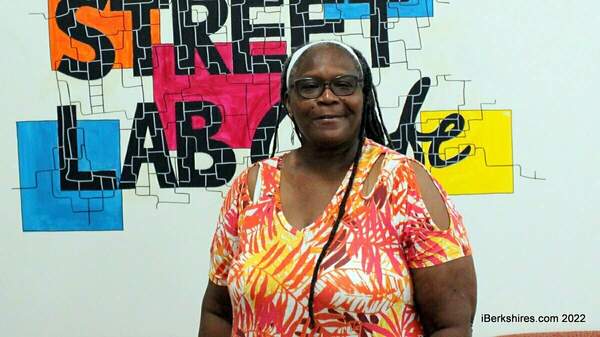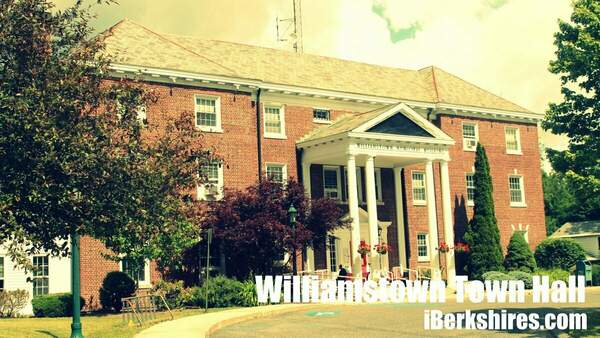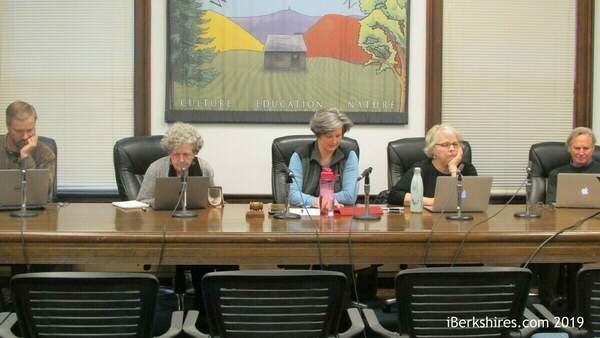Guest Column: Housing, Conservation Compatible in Williamstown
Editor's Note: Williamstown resident Catherine Yamamoto last week submitted the following letter as a private citizen to the town's Conservation Commission. Yamamoto also serves as chairman of the town's Affordable Housing Committee. We are running the letter as a guest column.
Dear Commission Members:
I come before you tonight, more than two years after the devastating flood of Tropical Storm Irene, and exactly one year after the Hazard Mitigation Grant from FEMA was announced in this very room. I come before you tonight to speak about Williamstown's urgent need for affordable housing, about the importance of town-owned properties — namely the Lowry and Burbank properties — in fulfilling that need.
You have heard much from those who oppose changing the status of Lowry and Burbank. Objections have been loud and clear from those who live near the two properties, from those who feel strongly about protecting their use as agricultural land, and their value as open space. And rightly so. Lowry and Burbank are beautiful, productive pieces of land with spectacular 360-degree views.
A recent letter to the editor of The Advocate mentions the beauty of the Burbank Property, as evidenced by this photo that appeared on the cover of the October 31 Advocate.
I would like to show you another picture. This, too, was once a beautiful place. A place where 300 people lived. A neighborhood of homes. A community of Williamstown residents.
Williamstown faces an unprecedented housing crisis. In one day, 5 percent of our non-student population lost their community; 155 homes were destroyed, and 67 more will soon be lost. Those living in the mobile home park lost their homes, their community, their support groups, their way of life. All residents of Williamstown felt their pain and, in response, opened their hearts, their homes and their wallets. The loss of The Spruces is a loss for us all.
Not only homes were lost. Almost all of those who lost their homes had to move away from Williamstown in order to find housing they could afford. In losing them, we lost one-fifth of our residents of modest means. In losing them, we lost pieces of the patchwork that is a varied and vibrant Williamstown.
You have not heard much from those who believe that the housing crisis we face justifies the use of portions of Lowry or Burbank. While these voices have been mostly silent, I believe they are many.
Those of us supporting the use of a portion of Lowry or Burbank for housing that would be affordable to the population we have lost, and to those who would come after them, believe that housing, agriculture, and open space can be good neighbors, can occupy contiguous land, indeed can share space.
We envision a community, a neighborhood safe from raging river and water surging downhill.
Lowry and Burbank together are 170 acres, 170 acres of undeveloped, town-owned land, located in the center of town, close to town water and sewer and the amenities necessary to daily living. The Board of Selectmen requested 10 acres of Lowry for housing, roughly 6 percent of those 170 acres. The fact that these 10 acres are town-owned would contribute to the affordability of housing built there. The Selectmen asked for this land because it is the only centrally located, town-owned parcel large enough to accommodate a new neighborhood community. And they asked for it now, because the town has not only the funds coming to make the housing a reality, but also stands to gain the 114 acres of The Spruces to offset — offset at a ratio of 11 to 1 — the use of just 10 acres of Lowry.
In response to suggestions of affordable housing on a portion of Lowry, those opposed have suggested other sites for housing: other town-owned properties, privately owned sites, other neighborhoods, brownfields, flood plains. Even other towns. In short, anywhere but Lowry.
We have heard many reasons why building on Lowry or Burbank would not be practical, financially feasible, environmentally sound, suitable or legal, about increased traffic, wetlands, endangered species, potential lawsuits, how various obstacles to changing its status could never be overcome, how funding for such a neighborhood could never be found, how the Legislature would never vote in favor of a change. In the face of relentless and withering opposition, few voices were brave enough to speak, knowing they would be harshly taken to task for their views. And they were.
Lowry and Burbank are town-owned properties, acquired by our town fathers for future use by the town. Yes, both properties were, in 1987, placed under the care, custody, management and control of the Conservation Commission by town meeting vote, but that does not change the fact that they remain town-owned properties, centrally located, near town water and sewer, and available for the future use by the town should we, as a town, so decide.
Beyond the objections from those whose back yards are Lowry and Burbank, those who ride their horses there or those who profit from the hay grown there, are the compelling realities of why a mix of housing, agricultural and recreational use, and open space would work, would enable more residents to enjoy the beautiful views, would enable Williamstown to maintain its varied economic character.
This has been done elsewhere in the commonwealth, and if we, as a town, agreed that it could be done here, it could be done.
It is precisely the location of these properties that prompted our town fathers to acquire and hold on to Lowry and Burbank. Our town center is surrounded by protected lands, state forests, and private lands with restrictions in force. With 88 percent of Williamstown's 33,000 acres protected in some manner, land in Williamstown is scarce and dear. We face a serious housing crisis. One has only to lift up one's eyes to the hills to see that we do not have an open space crisis.
Why was it proposed that Lowry and Burbank be given to the care, custody, management and control of the Conservation Commission in 1987? This was not long after Williamstown's building boom of the 1980s, when the Stratton Road condominiums that abut Lowry were built, when the homes at the west end of Longview Terrace that abut Burbank were built. This building boom is evidenced by the number of building permits for new construction that were issued in those years. Events of that time suggest that the move to restrict Lowry and Burbank was in response to this building boom and also in direct response to a developer's early 1987 recommendation to build affordable housing on a portion of Burbank.
Putting Lowry and Burbank under the management of the Conservation Commission may have been an effort to preserve open space and farmland (the same farmland that fell to the '80s building boom) ... or it may have been an effort to prevent more housing in an area than had quickly gone from farmland and open space to residential neighborhood. It may have been both.
That action brought us attention from Boston. Shortly after that May 1987 town meeting vote, the town received a letter from the Executive Office of Communities & Development. A letter from the assistant secretary of the EOCD cautioned the town that discretionary funds would be withheld from communities determined by EOCD to have local practices, policies or regulations that unreasonably exclude the development of housing for low- and moderate-income households.
In his letter to then chair of the Board of Selectmen Alan George, a copy of which I have here, the assistant secretary also wrote:
"EOCD is particularly concerned about the Town Meeting's vote on May 12 [1987] to transfer to the Conservation Commission and impose use restrictions on 223 acres of town-owned property. This action, which closely follows a recommendation to develop affordable housing on a small portion of the property, has prompted a review by this office of Williamstown's housing policies pursuant to Executive Order 215. We are particularly concerned that the transfer of the land: (1) creates the appearance of obstructing the potential development of affordable housing on town-owned land; (2) was not justified solely on conservation grounds since the land was already owned by the town and there was no other 'threat' of development and, (3) may significantly limit the Town's ability to meet its needs for affordable housing."
This letter was not all the town received. This letter was followed by a visit to Williamstown by then EOCD director Clark Ziegler, now the executive director of Mass Housing Partnership. According to the minutes of a July 13, 1987, meeting with the Selectmen and town manager, Mr. Ziegler expressed concern that the three town-owned parcels had been placed under the control of the Conservation Commission though they were already under the control of the Board of Selectmen. His further concern was that a suggestion to develop one of the sites had not even been given a hearing and that restricting the properties would now make it difficult for the town to find housing sites at a reasonable cost.
What is certain is that the conversation about the use of Lowry and Burbank, and in particular, Lowry, began before 1987 and continued after the land came under the management of the Conservation Commission, indeed, before the ink of the 1987 town meeting vote was dry. Minutes of meetings of the Board of Selectmen, the Conservation Commission and the Housing Partnership, as well as newspaper articles from that time, document that conversation and suggest the fact that many in town, including members of this commission at that time, considered the land still to be available for development.
What is certain is that Lowry and Burbank will continue to be considered as land available for use by the town — either as open space or for development — depending on the town's needs. This is a reality based on the fact that undeveloped land in the center of town is scarce.
With this letter and the various documents that I ask you to add to your collection of evidence about the history of Lowry and Burbank, I offer a side of the story that I believe to be more widely held than has been evident over the 12 months since the most recent proposal for Lowry was made. It is my hope that the people of Williamstown will continue this conversation, will continue to value Lowry and Burbank among the town's most precious assets, will remember that at a time when the town stood to gain 114 new acres for open space, not one acre was released from conservation. It is my hope that that town residents will strive to be good stewards of the town's future and in doing so will think of Lowry and Burbank as assets to be used to their highest benefit, for the good of the many, not the good of the few.
Sincerely yours,
Catherine Yamamoto
Williamstown
Nov. 14, 2013
Tags: affordable housing, conservation commission, conserved land, lowry property, Spruces,















